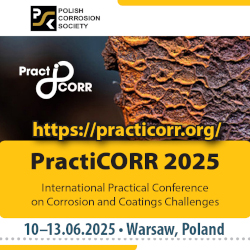Open Access (Artykuł w pliku PDF)
Concrete with the addition of rubber granules to make vibroisolating partitions to protect the environment against vibrations
prof. dr hab. inż. Tadeusz Tatara, Politechnika Krakowska; Wydział Inżynierii Lądowej
ORCID: 0000-0002-4071-2358
dr hab. inż. Alicja Kowalska-Koczwara, prof. PK, Politechnika Krakowska; Wydział Inżynierii Lądowej
ORCID: 0000-0001-8088-7729
dr inż. Maciej Gruszczyński, Politechnika Krakowska; Wydział Inżynierii Lądowej
ORCID: 0000-0002-0445-5745
Adres do korespondencji: Ten adres pocztowy jest chroniony przed spamowaniem. Aby go zobaczyć, konieczne jest włączenie w przeglądarce obsługi JavaScript.
DOI: 10.15199/33.2022.06.06
Oryginalny artykuł naukowy
Streszczenie. W artykule omówiono badania surowców, dodatków i domieszek chemicznych, służących do zaprojektowania składu mieszanek betonowych do wykonania przegród w gruncie (palisady i ściany szczelinowe) o zwiększonej wibroizolacyjności w porównaniu z rozwiązaniami stosowanymi obecnie oraz zamieszczono wyniki badań właściwości betonów referencyjnych, a także z dodatkiem granulatu gumowego. Badania wykonano w laboratorium Katedry Inżynierii Materiałów Budowlanych Politechniki Krakowskiej w ramach realizacji projektu: Innowacyjna konstrukcja przegród wibroizolacyjnych do ochrony środowiska przed drganiami transportowymi i z podobnych źródeł.
Słowa kluczowe: beton; drgania; granulat gumowy.
Abstract. The article presents the research on raw materials, additives and chemical admixtures for the design of concretemixes for the construction of partitions in the ground (palisades and diaphragm walls) with increased vibration isolation compared to the solutions currently used and also the results of tests of the properties of reference concretes and concretes with the addition of rubber granulate. The tests were carried out in the laboratory of the Department of Building Materials Engineering at the Cracow University of Technology as part of the project: Innovative construction of vibro-isolating partitions to protect the environment against transport vibrations and fromsimilar sources.
Keywords: concrete; vibrations; rubber granulate.
Literatura
[1] Tamura Y. Damping in Buildings and Estimation Techniques, Advanced Structural Wind Engineering. Springer Japan; 2013 (book chapter): 347 – 376.
[2] Fedorczak-Cisak M, Kowalska-Koczwara A, Kozak E, Pachla F, Szuminski J, Tatara T. Energy and Cost Analysis of Adapting a New Building to the Standard of the NZEB, IOP Conf. Series: Materials Science and Engineering. 2019; 471: 112076.
[3] Fedorczak-Cisak M, Furtak M, Gintowt J, Kowalska-Koczwara A, Pachla F, Stypuła K, Tatara T. Thermal and Vibration Comfort Analysis of a Nearly Zero-Energy Building in Poland, Sustainability. 2018; 10, 3774.
[4] Amick H, Ph.D., P.E, Can vibration be controlled with damped concrete? semiconductor fabtech – 26th edition, FT26 – 09/1.
[5] Stypuła K. Drgania mechaniczne wywołane eksploatacją metra płytkiego i ich wpływ na budynki. Zeszyty Naukowe Politechniki Krakowskiej, Inżynieria Lądowa. Krakow. 2001; 7.
[6] Fu X, Li D. Chung, Improving the vibration damping capacity of cement, Journal ofMaterials Science. 1998; 33: 3601 – 3605.
[7] Hernandez-Olivares F, Barluenga G. Fire Performance of Recycled Rubber-Filled High- -Strength Concrete, Cement and Concrete Research. 2004; 34, 1: 109 – 117. doi: 10.1016/S0008- -8846 (03) 00253-9.
[8] Kawecki J, Kowalska A. Tłumienie drgań w opisie sztywnościowo-bezwładnościowym. Czasopismo Techniczne. Budownictwo 107 (3-B), 43 – 50.
[9] Nabavi SF, Bhattacharjee B, Madan A. Improving the damping properties of concrete, Incorporating Sustainable Practice in Mechanics of Structures and Materials _Fragomeni, Venkatesan, Lam & Setunge (eds) c 2011 Taylor & Francis Group, London, ISBN 978-0-415- 61657-7.
[10] Suh JD, Lee DG. Design andmanufacture of hybrid polymer concrete bed for high-speed CNC milling machine. Int J Mech Mater Des. 2008; 4: 113 – 121. https://doi.org/10.1007/s10999-007- 9033-3.
[11] Lee KS, Choi J-I, Park SE, Hwang J-S, Lee BY. Damping property of prepacked concrete incorporating coarse aggregates coated with polyurethane, Cement and Concrete Composites. 2018; 93: 301 – 308. ISSN 0958-9465.
[12] Kaewunruen S, Li D, Chen Y, Xiang Z. Enhancement of Dynamic Damping in Eco- Friendly Railway Concrete Sleepers Using Waste-Tyre Crumb Rubber. Materials. 2018; 11, 1169. https://doi.org/10.3390/ma11071169.
Przyjęto do druku: 20.05.2022 r.
Materiały Budowlane 06/2022, strona 48-52 (spis treści >>)































